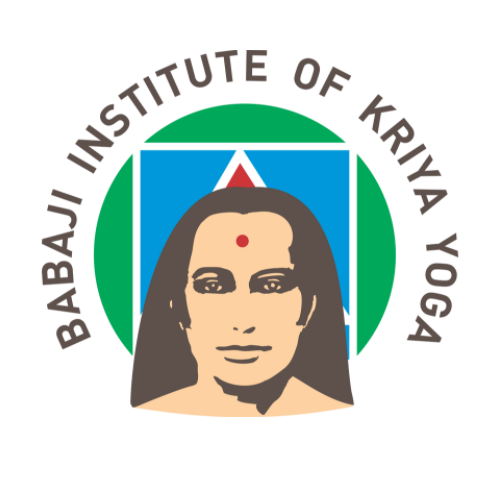Babaji
In 1946, Paramahansa Yogananda, one of modern india's greatest, revealed in his classic " Autobiography of a yogi," the existence of a christ- like saint, an immortal yogi, Mahavatar Babaji. Yogananda related how Babaji for for centuries lived in the Himalayas guiding many spiritual techers at s distance, usually without their even knowing it.
He was agreat siddha, one who had overcome ordinary human limitations, and who worked silently for the spiritual evolution of all humanity, behind the scenes. He also revealed that Babaji was the one who had taught a powerful series of yogic techniques, know as "Kriya Yoga," to Lahiri Mahasaya, around 1861, who subsequently initated many other, including Yoganada's Own Christ – like guru, Sri Yukteswar, some thirty years later. Yogananda spent 10 years with his guru before Babaji himself appeared to him and directed him to bring the sacred science of Kriya to the west. Yogananda fulfilled this sacred mission from 1920 to 1952, when he attained mahasamadhi.
Babaji was given the name "Nagaraj," which means " serpent king", referring to "kundalini," our great divine potential power and consciousness. He was born on the 30 day of November 203 A.D., in a small coastal village now know as Parangipettai, in Tamil Nadu just nort of Chidambaram. His birth coincided with the ascendancy of Rohini Nakshatra, under which krhna was also born. The birth took place during the celebration of kartikai Deepam, the night before the new moon the Tamil month of Kartikai. His oarents were Nambudri Barahmins who had immigrated there from the Malabar coast on the western side of south India. His father was the priest in the shiva temple of this village, which is today a temple dedicated to Muruga.
At the age of 5, he was kidnapped by a trader and taken as a slave to what is today Calcutta. A rich merchant purchased him, but shortly thereafter gave him his freedom. He joined a small band of wandering monks, and with them became learned in the sacred religious and philosophical literature of India. However, he was not satisfied. Hearing of the existence of agreat siddha, named Agastyar, in the south, he made a pilgrimage to the sacred temple of katirgama, Sri Lanka. There he met a disciple of Agastyar, whose name was Boganathar. He studied "dhyana," or meditation, intensively and "Siddhantham," the philosophy of the siddhas, with Boganathar for four years. He experienced "sarvihelpa Samadhi," or cognitive absorption, and had the vision of Lord Muruga.
At the age 15, Boganathar sent him to his own guru, the legendary Agastyar, who was know to be living near to Courtrallam,in Tamil Nadu. After perfoming intensive yogic practices at Courtrallam for 48 days, Agatyar revealed himself, and initiated him into Kriya Kundalini Pranayama. He directed boy Nagaraj to go to Badrinath, high in the Himalayas, and to practice all that he had learned, intensively, to become, a "siddha". Over the next 18 months, Nagaraj practiced the yogic techniques which Boganathar and Agastyar had taught him. In so doing, he surrendered his ego, all the way down to the level of the cells in his body, to the divine, which descended into him. He became a siddha, one one who has surrendered to the power and consciousness of the divine! His body was no longer subject to the ravages of disease and death. Transformed, as a Mah siddha, he dedicated himself to the upliftment of suffering humanity.
Since that time, Babaji has continued to guide and inspire some of history's greatest saints and many spiritual teachers, in the fulfillment of their mission. These include Adi Shankaracharya, the great 9 century A.D. reformer of Hinduism, and Kabir, the 15 century saint beloved by the Hinus and Muslims. Both of them were personally initiated by Babaji, and refer to him in their wrtings.
He has maintained the remarkable appearance of a youth of about 16 years of age. Babaji's greatest contribution to the world in modern times has been the revival, beginning in 1861, of Kriya Yoga, whom Patanjali refers to in his famous "Yoga – Sutras." Patanjali wrote this classic text of yoga about the 3 century A.D. In it he defines Kriya Yoga in II. 1 as "constant practice, (particulary by the cuitivation of detachment), self – study, and devotion to the Lord." However, along with includes the cultivation of "Kundalini," the great potential power and consciousness, through the use of breathing, mantras and devotional practices. His modern synthesis of "Kriya Yoga," includes a rich variety of techniques.
During the first level, one learns how to communicate with Babaji in the : Babaji Samyama Kriya," which involves a deep state of inner communion with Satguru. Babaji gradually reveals himself to his devotees and disciples, capturing their hearts in various types of personal devotional relationship in which he guides them in their development. His relationship with each of us is unigue and according to our individual needs and nature. He is our personal Guru. As our hearts expand our communion with him culminates with the "universal vision of love," wherein one witnesses Babaji in everything.
"Meditation is not thinking of anything; it is remaining cumma." - Yogaswami
